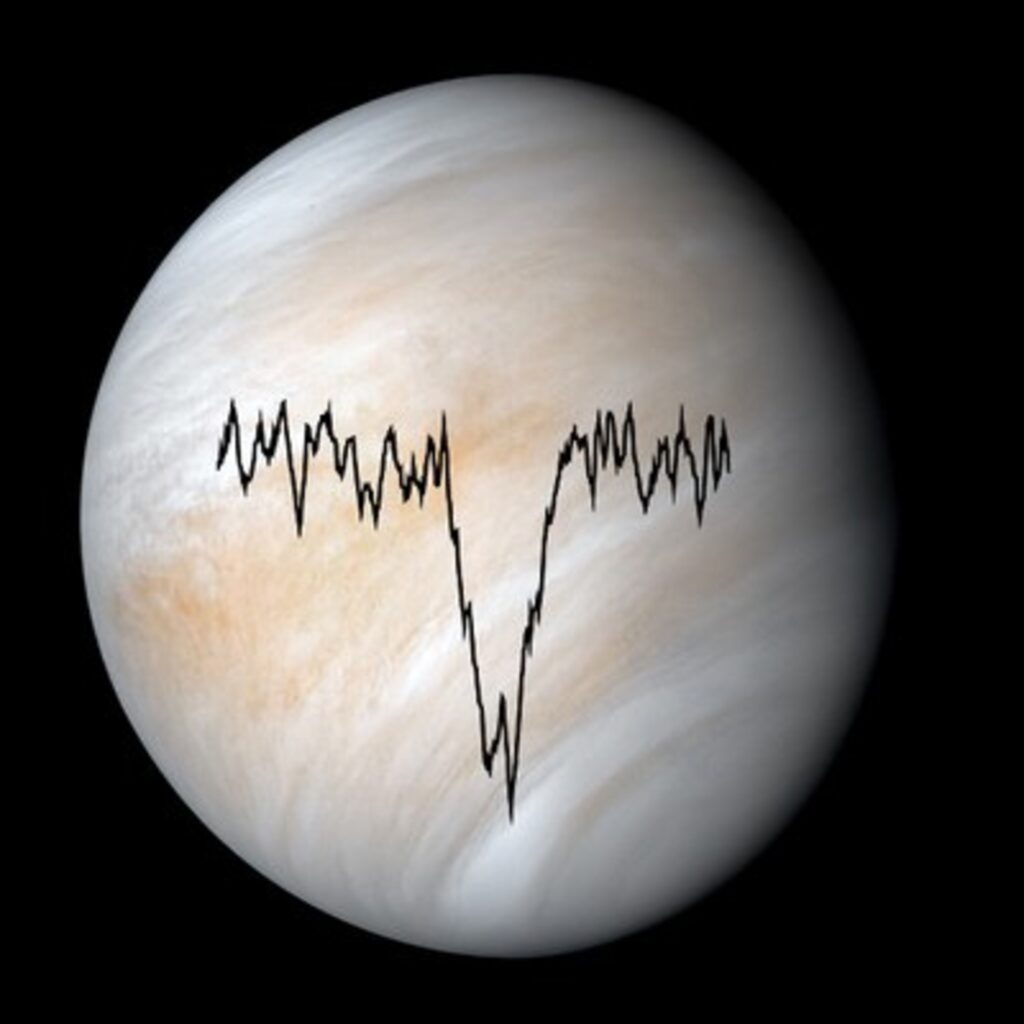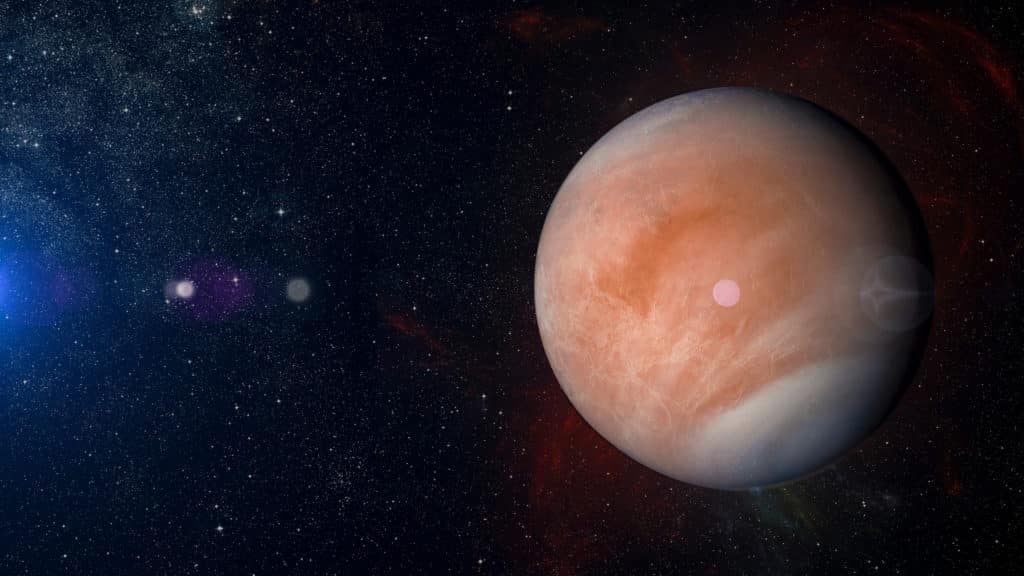For the first time, researchers have successfully measured the amount of atomic oxygen on both the day and night sides of Venus, revealing new insights about the planet’s atmosphere. This breakthrough was made possible using the upGREAT array spectrometer aboard the Stratospheric Observatory for Infrared Astronomy (SOFIA), a high-flying observatory that allows scientists to peer into the cosmos from above the Earth’s interfering atmosphere.
On Earth, we’re used to oxygen being in the form of O2, the molecule we need for breathing. But on Venus, atomic oxygen – single oxygen atoms – is an important player in the planet’s air. Atomic oxygen forms when sunlight breaks down carbon dioxide (CO2) and carbon monoxide (CO) molecules, a process known as photolysis.
These lone oxygen atoms don’t just float aimlessly; they’re part of a grand atmospheric ballet. By day, they’re produced in droves and by night, they glide across the sky, eventually gathering at a point on the planet’s night side opposite the sun. There, they often pair up to form molecular oxygen (O2) again. This constant cycle is crucial to understanding both the chemistry and the temperature of Venus’s upper atmosphere.
Venus has often been dubbed Earth’s twin due to their similar size, composition, and proximity in the solar system. Yet, the two planets couldn’t be more different in terms of their climates and atmospheres. Unlike Earth’s hospitable blue skies and rich biodiversity, Venus is enshrouded in thick clouds and a hostile atmosphere dominated by carbon dioxide and nitrogen.

A Peek Into Venus’s Atmosphere
Until now, observing atomic oxygen directly on Venus was tough. Past efforts could only capture it indirectly or on the night side of the planet. But with SOFIA’s advanced instruments, scientists could measure it by looking at a specific transition of oxygen atoms that happens at a frequency of 4.74 terahertz. This transition is sensitive to the temperature of the atmosphere and the amount of oxygen present.
“Previous and current detection methods are indirect and are based on measurements of other molecules in combination with photochemical models,” explains Heinz-Wilhelm Hübers, Director of the DLR Institute of Optical Sensor Systems and leading author of the study, in a statement. But in November 2021, a team of researchers from various prestigious institutes managed a direct observation.
The new observations showed that the oxygen was warmer on the day side (about 156 Kelvin, or -117 Celsius) than on the night side (about 115 Kelvin, or -158 Celsius), which makes sense since the day side is where the atomic oxygen is freshly made by sunlight.
Using the upGREAT instrument, scientists faced the daunting challenge of observing Venus for mere 20-minute windows over three days. Despite this, they succeeded in creating a distribution map of atomic oxygen on Venus. The feat was made possible due to the upGREAT’s exceptional sensitivity and SOFIA’s unparalleled capabilities.

This scientific endeavor involved detecting emissions from Venus in a specific frequency—around 4.74 terahertz. To understand this, one could liken it to the Fraunhofer lines in the Sun’s spectrum, which tell scientists about the Sun’s atmospheric contents. In the same way, the absorption line in the terahertz spectrum of Venus speaks volumes about atomic oxygen.
“The strength and shape of the absorption signal is a measure of the amount of atomic oxygen and its temperature,” says Hübers. The findings indicate the atomic oxygen is predominantly found at around 100 kilometers altitude, with temperatures hovering around minus 120 degrees Celsius on the day side and chilling down to minus 160 degrees Celsius on the night side. Interestingly, the concentration of atomic oxygen on Venus is much lower than on Earth, by about ten times.
These measurements are not just about recording data; they carry the potential to unravel the evolutionary secrets of our neighboring planets. Understanding the discrepancies in oxygen levels and temperature provides clues as to why Earth and Venus have tread such divergent paths, despite their common beginnings.
Why haven’t we done this before? Well, Earth’s own atmosphere gets in the way, especially the water vapor, which absorbs the same signals scientists are trying to detect from Venus. That’s why SOFIA, which flies at altitudes around 13 kilometers, is such a game-changer — it soars above most of Earth’s water vapor.
What’s Next?
The findings from the SOFIA mission offer a snapshot of Venus’s atmospheric conditions during the observation times. While the study shows variations in atomic oxygen concentrations across different times and latitudes, it opens the door for future missions, possibly involving orbiters around Venus, to build on these results. Such missions could provide more detailed altitude profiles and even more precise measurements, painting a fuller picture of how Venus’s atmosphere behaves.
As researchers continue to decode the data, they move closer to comprehending the forces that have shaped Venus and our own world so differently, perhaps even gleaning insights into the broader workings of planetary atmospheres.
The research paper is published in the journal Nature Communications.












